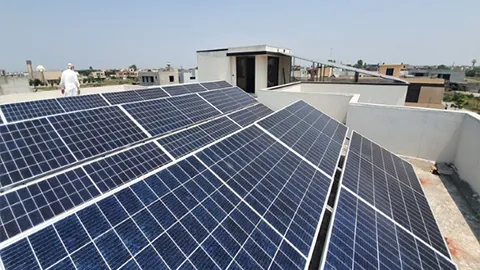
The Punjab and Sindh governments have unveiled ambitious plans to make solar panels accessible to the public, catering to different needs and demographics.
Sindh’s initiative, in collaboration with the World Bank, offers complete solar systems to households at a remarkably low price of Rs7,000. Aimed at providing essential lighting and ventilation, the scheme targets 200,000 households across the province, with Karachi alone set to benefit from 50,000 systems. With each unit capable of powering a fan and three LED bulbs, this endeavor seeks to enhance energy access for communities while minimizing costs.
The distribution effort spans all districts of Sindh, with 6,656 solar systems earmarked for each region, set to kick off in October following procurement completion. Funded by a $32 million allocation from the World Bank, the project hints at potential future expansions, building on Sindh’s existing 400MW solar energy generation capacity.
Meanwhile, the Punjab government’s initiative takes a different approach, offering free solar systems to 50,000 households in the province. Fully funded by the provincial government, this Rs10 billion endeavor targets low-consumption households, covering all expenses from system costs to installation.
Under the scheme, households using up to 100 units of electricity per month qualify for the free solar systems, aiming to alleviate electricity costs for economically vulnerable segments. With both provinces leveraging solar power as a viable energy solution.
Marking International Human Rights Day, Sindh Government Spokesperson and Sindh Human Rights Commission Board Member…
The Karachi Water and Sewerage Corporation (KW&SC) has begun expedited work to replace a deteriorated…
Pakistan’s gaming and animation ecosystem enters a transformative phase as the Centre of Excellence in…
A multi-platform outage struck earlier today, triggered by service issues at content delivery network (CDN)…
Taking a ride or sending a package shouldn’t come with second guesses. That’s why inDrive,…
First-ever official representation from Pakistan at FC Barcelona’s base camp marks a new chapter in…
This website uses cookies.